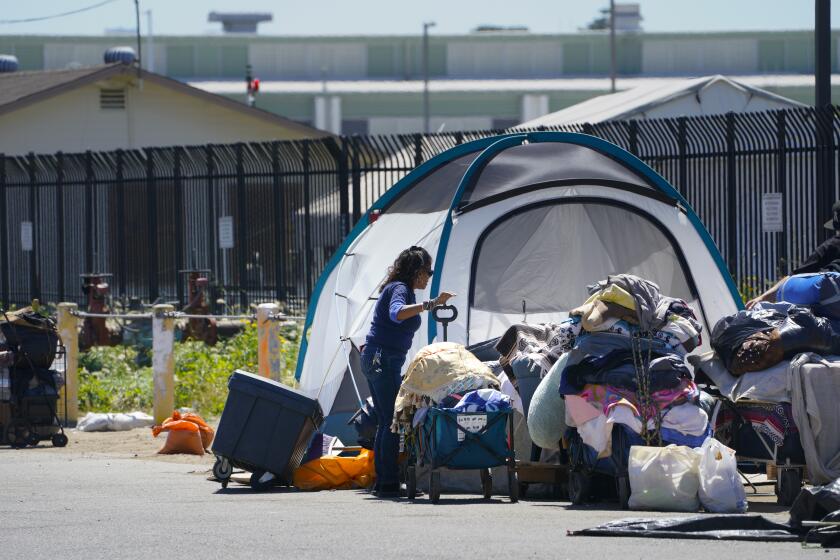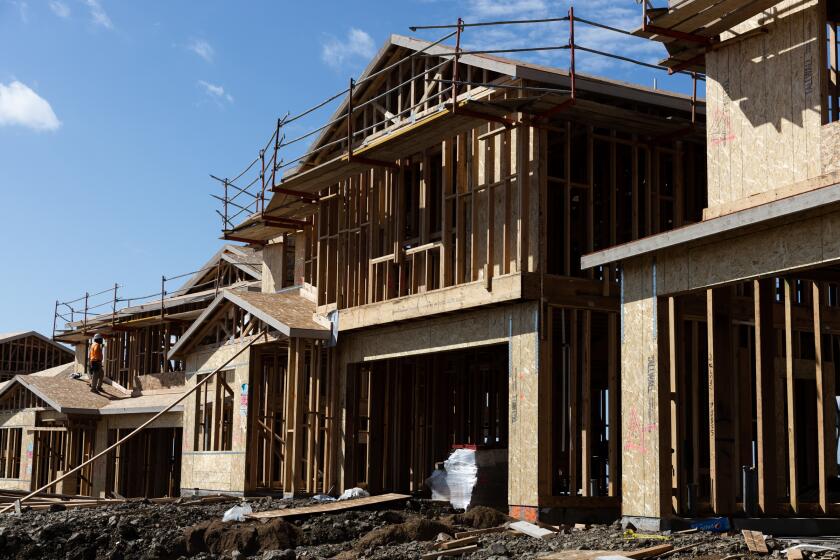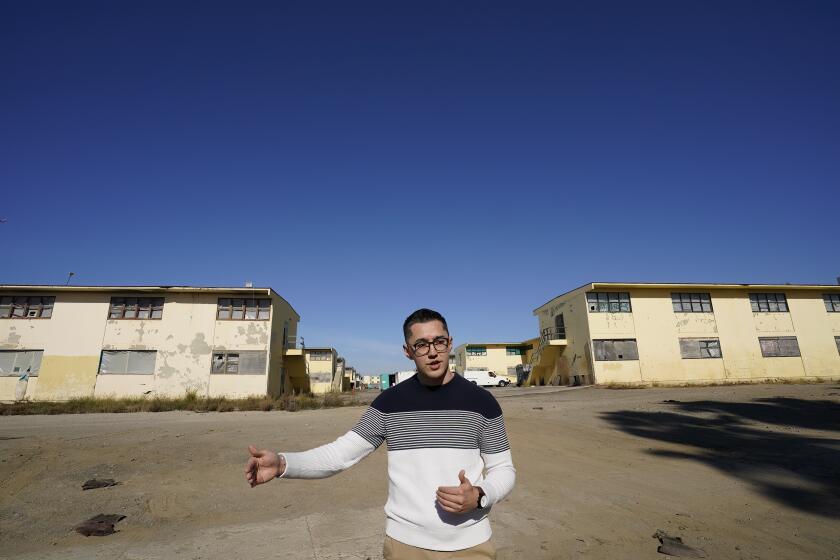Column: Court ruling on SDPD shooting boosts push for stronger police oversight
Appellate justices kick open door to broad examination of internal police investigations, not just Midway shooting
San Diego police Officer Neal Browder immediately holstered his handgun after firing one shot that felled Fridoon Rawshan Nehad. Then Browder sprinted to assist him.
The 2015 fatal shooting heightened concerns about violence involving police and how incidents are investigated.
Of the many irregularities surrounding the Midway District shooting, Browder’s actions right after he fired stuck out.
When an officer shoots someone he or she believes to be carrying a weapon — which Browder said he did at one point — the officer typically keeps his or her gun trained on the suspect, approaches slowly until it is certain the threat no longer exists and the weapon is cleared or secured.
A video of the incident, recorded by a security camera at a nearby business, shows the police veteran of nearly 30 years didn’t do that. Now, it’s important to keep in mind that circumstances in the moment can require varying responses. It’s also important to note, as we have before, that Browder fired five seconds after getting out of his patrol car, when the 42-year-old Nehad, who had been approaching slowly, was 17 feet away.
An internal investigation cleared Browder, who faced no charges by the district attorney and no publicly known disciplinary measures. A U.S. federal judge in San Diego dismissed a lawsuit by Nehad’s family, and it seemed like the incident would eventually fade away, as have other disputed officer-involved shootings here and across the country.
But in a stunning and sweeping ruling last week, a three-judge panel of the 9th U.S. Circuit Court of Appeals didn’t just revive the civil rights lawsuit, it opened the door to how the San Diego Police Department reviews such incidents.
Judges issued a blistering critique of the investigation and questioned Browder’s credibility because, among other things, he gave different accounts of whether or not he thought Nehad had a weapon. (Earlier, police had received a call about a man threatening people with a knife. No knife was found after Nehad was shot, but he had been carrying a blue pen.)
“These possible inconsistencies, along with video, eyewitness, and expert evidence that belies Browder’s claim that Nehad was ‘aggressing,’ are sufficient to give rise to genuine doubts about Browder’s credibility,” the ruling stated.
The opinion also bolsters a decades-long effort to create a new police review board that has subpoena power, its own legal counsel and the ability to conduct independent investigations. The current Community Review Board on Police Practices can only review internal investigations. SDPD hierarchy and the police union for years have opposed the former, while agreeing to work with the latter.
“This is what we’ve been saying all along, that police oversight is pretty much null and void in San Diego,” said Anne Barron of Women Occupy San Diego.
In late June, before the ruling, the group filed the latest version of its proposal to establish a police panel with more teeth at City Hall. While independent, the proposed commission could only recommend policies and discipline, not enact them.
The proposal, targeted for the November 2020 citywide ballot, is expected to go before the San Diego City Council’s Rules Committee on July 31, Barron said.
The committee chair, council President Georgette Gomez, has spoken favorably about the concept in the past, as has Councilmember Monica Montgomery, chair of the Public Safety and Livable Neighborhoods Committee, which also could have a hearing on the proposal before it goes to the full council.
Montgomery is one of three new members elected in November who have strengthened the council’s Democratic majority and made it more liberal. That raises the odds of the council putting the measure on the ballot. If that doesn’t happen, Barron said her group is ready to launch a signature-gathering campaign for a citizen’s initiative, though she doesn’t think that will be necessary.
Under the previous council, the proposal seemed headed for the 2018 fall ballot. But the measure moved slowly through the bureaucracy, unexpected requirements surfaced late and time ran out. Supporters, including some council members, questioned whether the proposal had been intentionally slow-walked through the process.
That’s not likely to happen this time around.
“We all understand the process,” Barron said.
(UPDATE) Meanwhile, the Rules Committee is also expected to consider a possibly competing ballot measure proposed by City Attorney, according to Andrew Keatts of the Voice of San Diego. That proposal would give the existing review board independent council, but it would not be as sweeping as the Women Occupy SD measure.
What happens next in the Nehad case is uncertain. The city has yet to determine how it will proceed. A jury trial would reveal further details of what happened and, in Barron’s view, expose serious flaws in how questionable actions by police officers are investigated. Given what’s currently known about the incident, it’s likely a question would surface of whether Browder meant to shoot Nehad or discharged his weapon accidentally.
However a trial turns out, or even if one never takes place, Barron said the appellate court ruling alone is a “great indictment of the current system.”
A five-second incident resulted in the loss of life. Those same five seconds could contribute to a dramatic overhaul of how police actions are investigated.
Tweet of the Week
Goes to Michael McFaul (@McFaul), former ambassador to Russia under President Barack Obama.
“An Obama and Bush fireside chat on race, tolerance, how to disagree respectfully, American ideals, etc would be a terrific and much needed event right now.”
Get Essential San Diego, weekday mornings
Get top headlines from the Union-Tribune in your inbox weekday mornings, including top news, local, sports, business, entertainment and opinion.
You may occasionally receive promotional content from the San Diego Union-Tribune.












